Related Research Articles
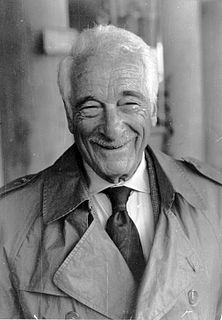
Børge Rosenbaum, known professionally as Victor Borge, was a Danish-American comedian, conductor, and pianist who achieved great popularity in radio and television in the United States and Europe. His blend of music and comedy earned him the nicknames "The Clown Prince of Denmark", "The Unmelancholy Dane", and "The Great Dane".
Mary Kay and Johnny is an American situation comedy starring real-life married couple Mary Kay and Johnny Stearns. It was the first sitcom broadcast on a network television in the United States. Mary Kay and Johnny initially aired live on the DuMont Television Network before moving to CBS and then NBC.
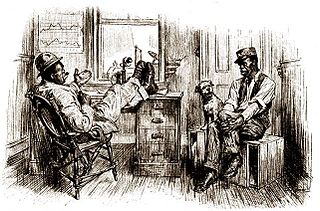
Amos 'n' Andy is an American radio sitcom about black characters, initially set in Chicago and later in the Harlem section of New York City. While the show had a brief life on 1950s television with black actors, the 1928 to 1960 radio show was created, written and voiced by two white actors, Freeman Gosden and Charles Correll, who played Amos Jones (Gosden) and Andrew Hogg Brown (Correll), as well as incidental characters. On television, 1951–1953, black actors took over the majority of the roles; white characters were infrequent.
The Voice of Firestone was a radio and television program of classical music. The show featured leading singers in selections from opera and operetta. Originally titled The Firestone Hour, it was first broadcast on the NBC Radio network on December 3, 1928 and was later also shown on television starting in 1949. The program was last broadcast in 1963.
Hollywood Screen Test is an American talent show that aired on ABC from 1948 to 1953. This program holds the distinction as the first regularly broadcast television series by the American Broadcasting Company.
Jacqueline Susann's Open Door is an American discussion show hosted by Jacqueline Susann, later to become famous as the author of Valley of the Dolls. It aired nationally on the DuMont Television Network between May 7 and June 18, 1951. Each week Susann would interview celebrities.

City Hospital, one of the first medical dramas on American television, was broadcast from 1951 to 1953, first on ABC and later on CBS.
The Doctor is a half-hour medical anthology series that aired Sunday evenings on the NBC television network from August 24, 1952, until June 28, 1953, with a total of 44 episodes.
Charade Quiz was an American game show hosted by Bill Slater which aired on the DuMont Television Network Thursdays at 8:30 p.m. ET from November 27, 1947, to June 23, 1949.
Front Page Detective is an American crime drama series which aired on the DuMont Television Network on Fridays at 9:30 p.m. ET from July 6, 1951, to September 19, 1952, and in October and November 1953. The program was then in broadcast syndication for several years thereafter.
Guide Right is an American musical variety show which aired on the DuMont Television Network from February 25, 1952, to February 5, 1954.
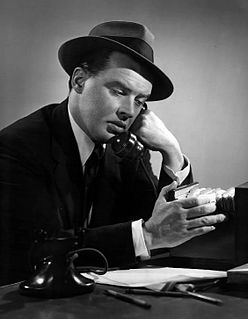
Charlie Wild, Private Detective is an American detective series that aired on three of the four major American television networks of the 1950s.
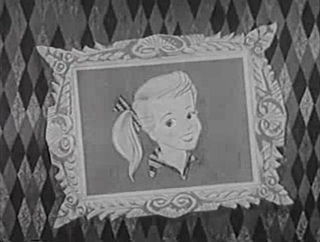
Meet Corliss Archer is an American television sitcom that aired on CBS and in syndication via the Ziv Company from April to December 1954. The program was an adaptation of the radio series of the same name, which was based on a series of short stories by F. Hugh Herbert.
Ladies Before Gentlemen was an American television series that was broadcast on the DuMont Television Network between February and May 1951. It was a panel show which featured discussions of male and female perspectives on a variety of topics. Moderated by Ken Roberts, the program aired from February 28 to May 2, 1951. The series was produced by Henry Misrock.
The Nash Airflyte Theater is an American dramatic anthology television series that was broadcast from September 21, 1950, through March 15, 1951, on CBS on Thursday evenings. It originated from New York City at 10:30 p.m. The show was sponsored by the Nash Motor Co.; the Nash Airflyte was an automobile model produced by the company.
Hollywood Premiere Theatre was the original title of an American television program that was broadcast more often as Hollywood Theatre Time on the ABC Television Network from September 20, 1950 to October 5, 1951.

Dick Joy was an American radio and television announcer. A journalism major at the University of Southern California, he went on to become well known on network radio and television.
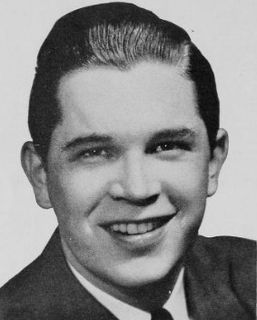
Ted Steele was an American bandleader and host of several radio and television programs. He also held administrative positions at radio stations and had his own media-related businesses.
Your Lucky Clue is an American television game show that was broadcast on CBS from July 13, 1952, until August 31, 1952, at 7:30 p.m. Eastern Time as a summer replacement for This Is Show Business.
Mohawk Showroom is an American musical television program that debuted on NBC on May 2, 1949 and ended on November 23, 1951. It was sponsored by Mohawk Carpet Mills Inc. In 1951, the program was one of several NBC-TV shows selected to be shown to United States military personnel overseas via kinescope recordings. The same title was also used for a similar radio program in 1951.
References
- ↑ McNeil, Alex (1996). Total Television: the Comprehensive Guide to Programming from 1948 to the Present (4th ed.). New York, New York: Penguin Books USA, Inc. p. 884. ISBN 0-14-02-4916-8.
- 1 2 Chase, Sam (February 24, 1951). "Television-Radio Reviews: Victor Borge show" (PDF). Billboard. p. 8. Retrieved November 3, 2021.
- 1 2 Brooks, Tim; Marsh, Earle F. (24 June 2009). The Complete Directory to Prime Time Network and Cable TV Shows, 1946-Present. Random House Publishing Group. p. 1470. ISBN 978-0-307-48320-1 . Retrieved November 2, 2021.
- 1 2 3 4 Hyatt, Wesley (6 October 2015). Short-Lived Television Series, 1948-1978: Thirty Years of More Than 1,000 Flops. McFarland. p. 26. ISBN 978-1-4766-0515-9 . Retrieved November 2, 2021.
- ↑ "Network Accounts" (PDF). Television Digest. July 14, 1951. p. 9. Retrieved November 3, 2021.
- ↑ Cullen, Frank; Hackman, Florence; McNeilly, Donald (2007). Vaudeville old & new: an encyclopedia of variety performances in America. Psychology Press. p. 133. ISBN 978-0-415-93853-2 . Retrieved November 2, 2021.
- ↑ Barkan, Elliott Robert (2001). Making it in America: A Sourcebook on Eminent Ethnic Americans. ABC-CLIO. p. 46. ISBN 978-1-57607-098-7 . Retrieved November 2, 2021.
- ↑ Dunning, John (7 May 1998). On the Air: The Encyclopedia of Old-Time Radio. Oxford University Press. pp. 702–703. ISBN 978-0-19-984045-8 . Retrieved November 2, 2021.